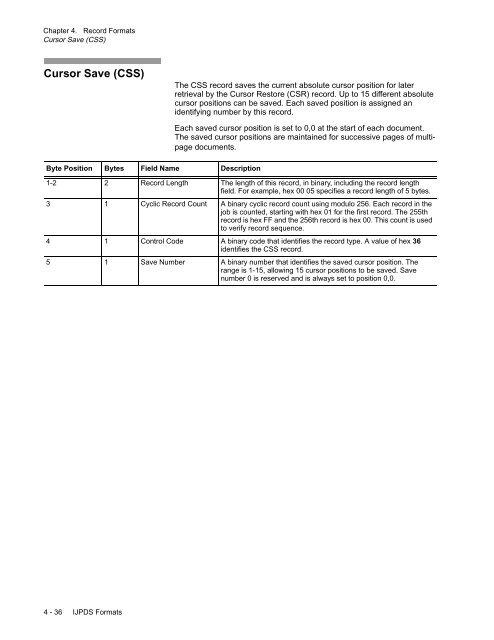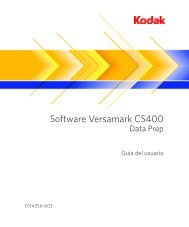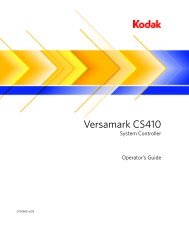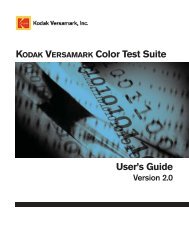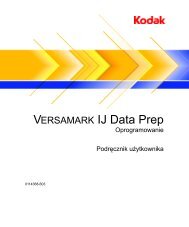You also want an ePaper? Increase the reach of your titles
YUMPU automatically turns print PDFs into web optimized ePapers that Google loves.
Chapter 4. Record Formats<br />
Cursor Save (CSS)<br />
Cursor Save (CSS)<br />
Byte Position Bytes Field Name Description<br />
4 - 36 IJPDS Formats<br />
The CSS record saves the current absolute cursor position for later<br />
retrieval by the Cursor Restore (CSR) record. Up to 15 different absolute<br />
cursor positions can be saved. Each saved position is assigned an<br />
identifying number by this record.<br />
Each saved cursor position is set to 0,0 at the start of each document.<br />
The saved cursor positions are maintained for successive pages of multipage<br />
documents.<br />
1-2 2 Record Length The length of this record, in binary, including the record length<br />
field. For example, hex 00 05 specifies a record length of 5 bytes.<br />
3 1 Cyclic Record Count A binary cyclic record count using modulo 256. Each record in the<br />
job is counted, starting with hex 01 for the first record. The 255th<br />
record is hex FF and the 256th record is hex 00. This count is used<br />
to verify record sequence.<br />
4 1 Control Code A binary code that identifies the record type. A value of hex 36<br />
identifies the CSS record.<br />
5 1 Save Number A binary number that identifies the saved cursor position. The<br />
range is 1-15, allowing 15 cursor positions to be saved. Save<br />
number 0 is reserved and is always set to position 0,0.


